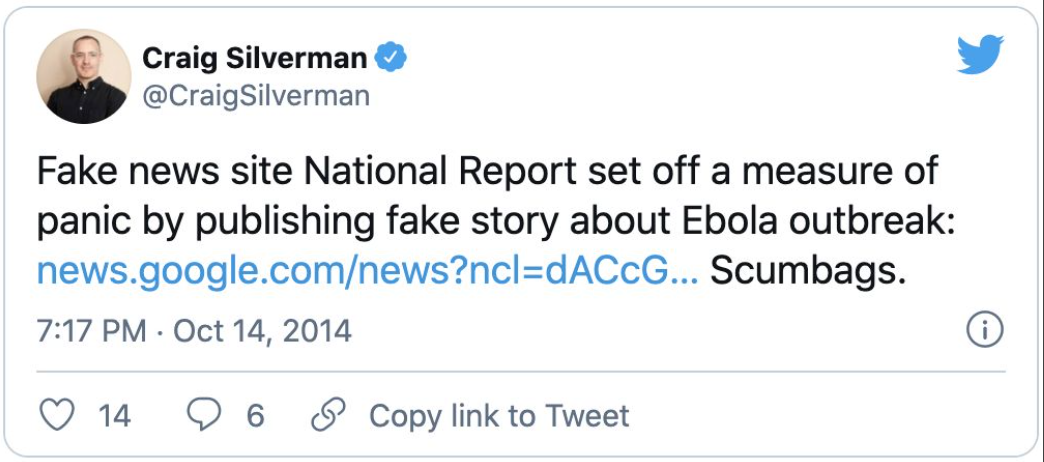There has been a lot of discussion and debate about fake news in recent years. It is yet another kind of misinformation.
BuzzFeed News editor Craig Silverman helped to popularize the term in 2014. Silverman was tracking misinformation as part of a larger research initiative associated with Columbia University’s Tow Center for Digital Journalism. He first used “fake news” to label a fabricated article he came across about a Texas town allegedly quarantined because of an Ebola outbreak. Silverman defined fake news as “completely false information that was created and spread for profit.” What makes this kind of media particularly insidious is that it looks official, credible, and convincing.


